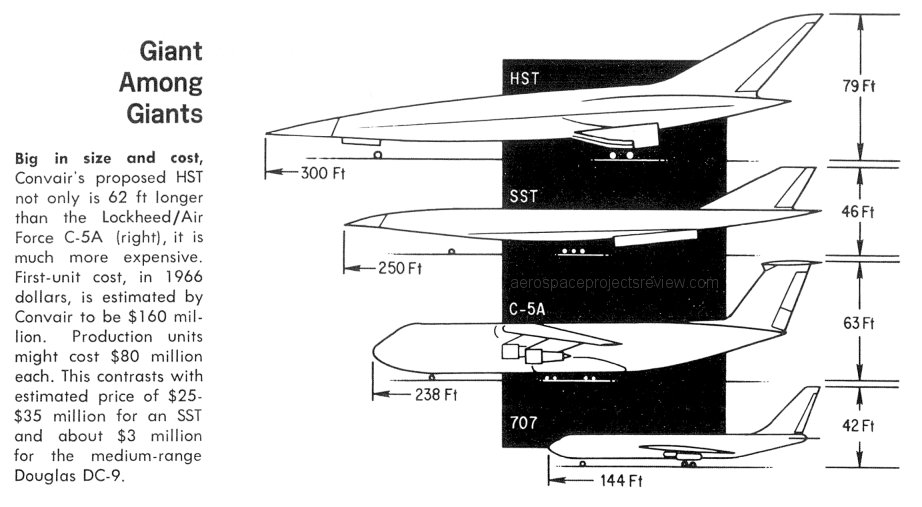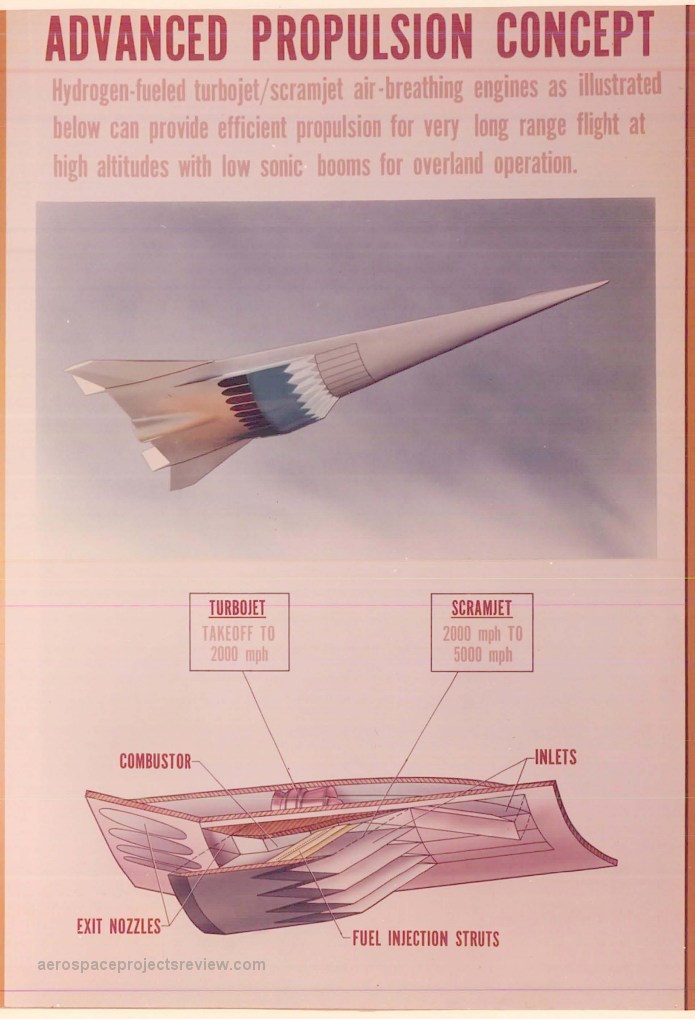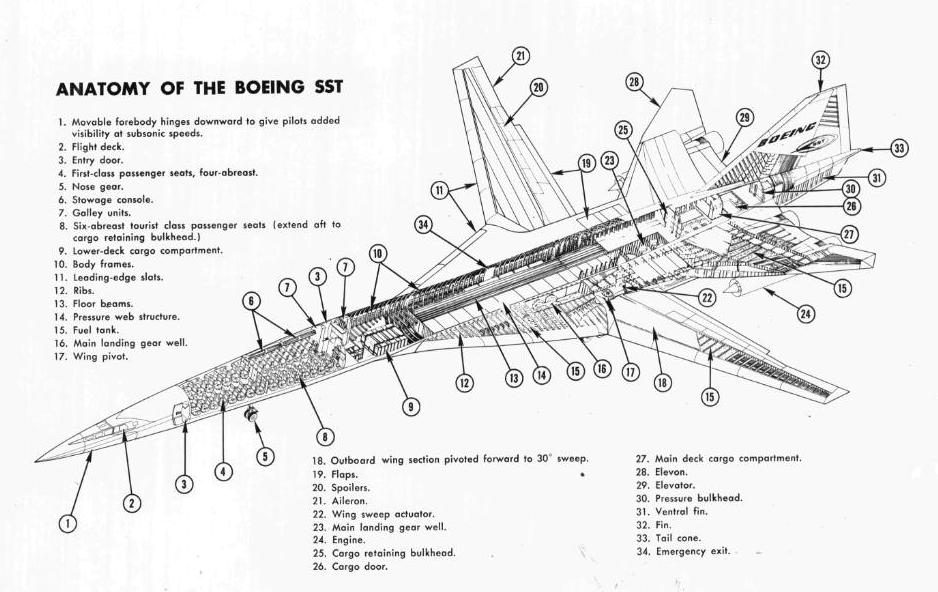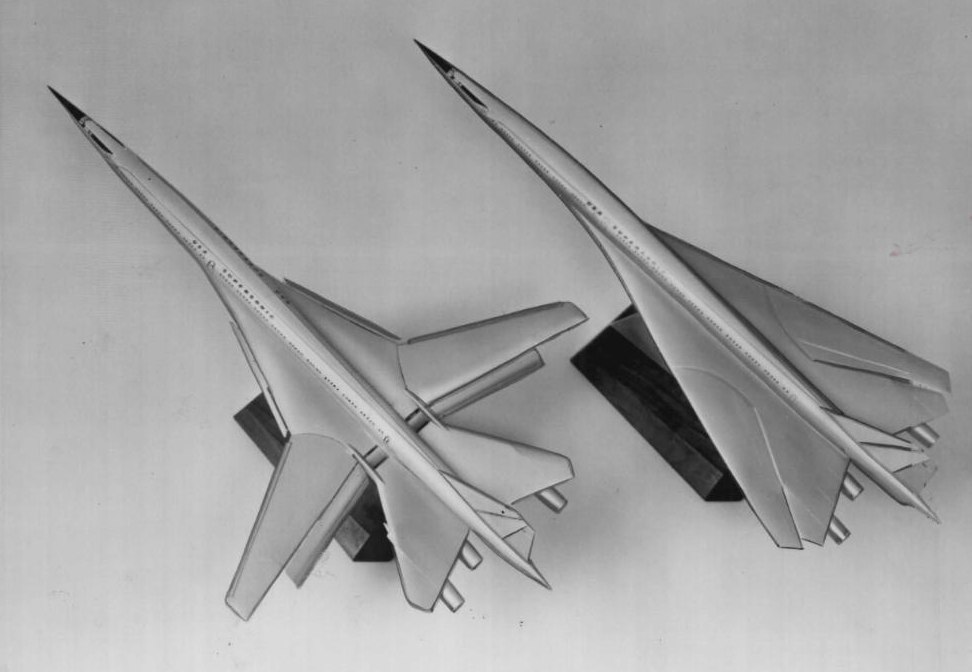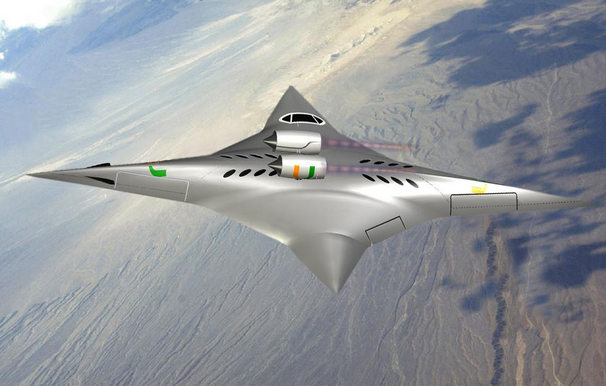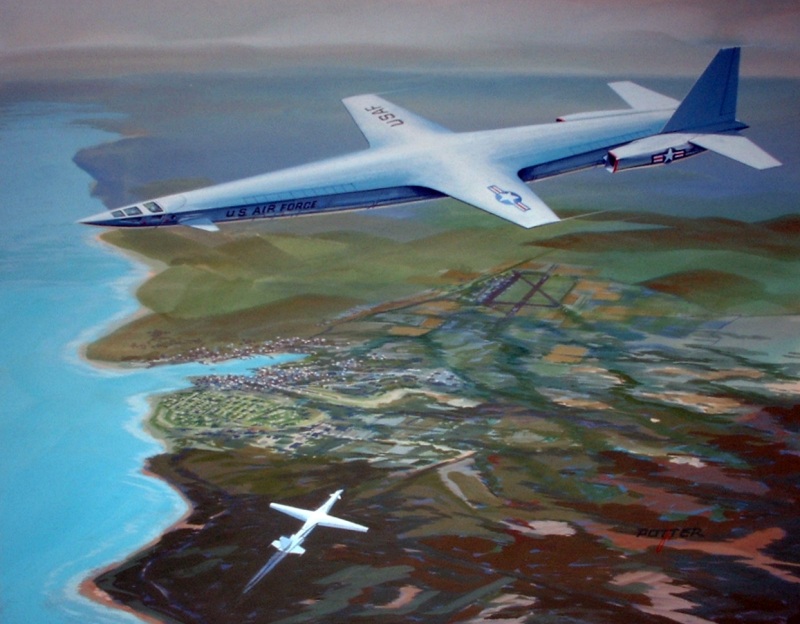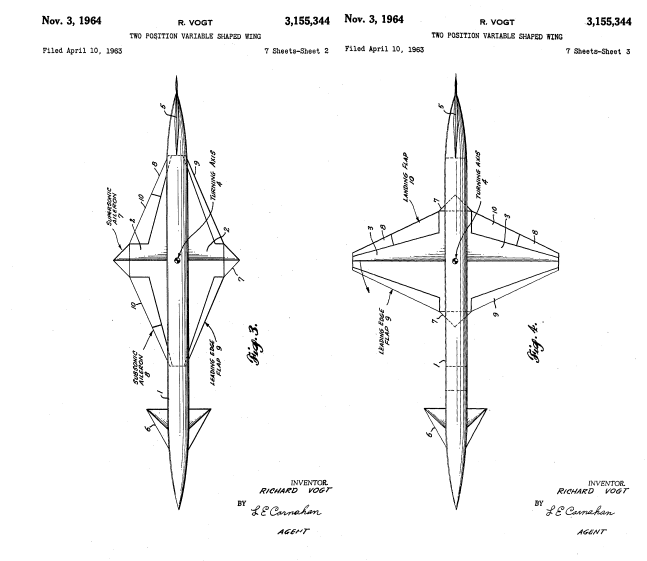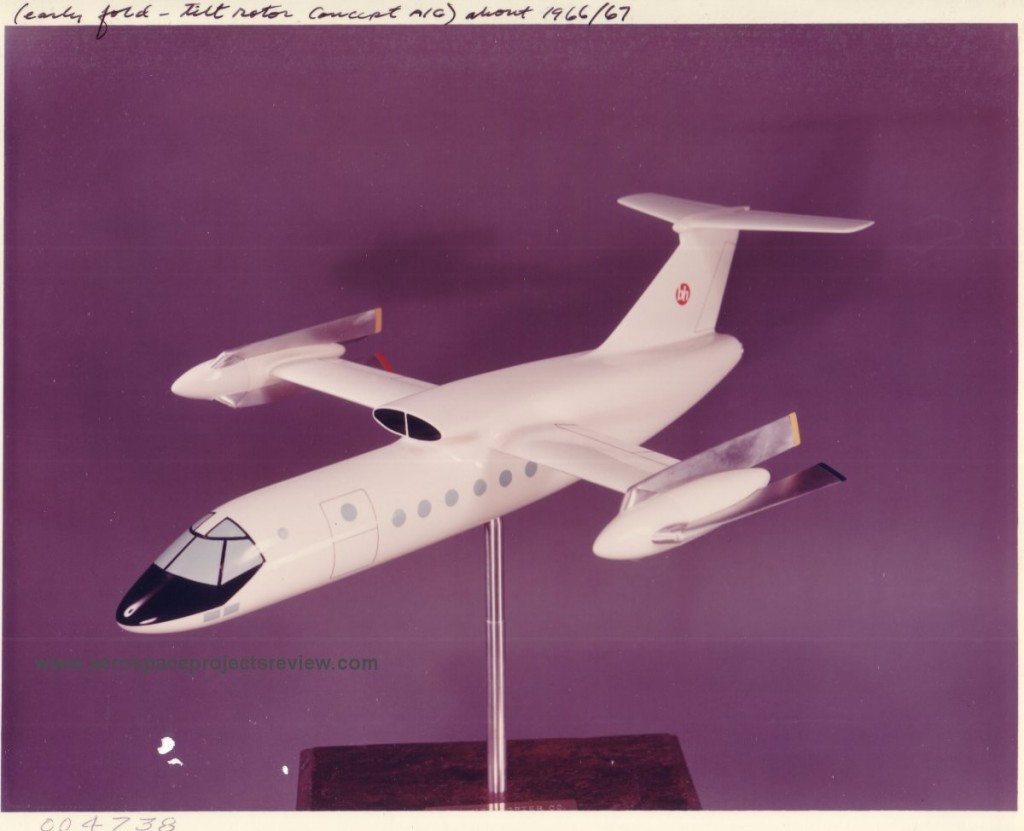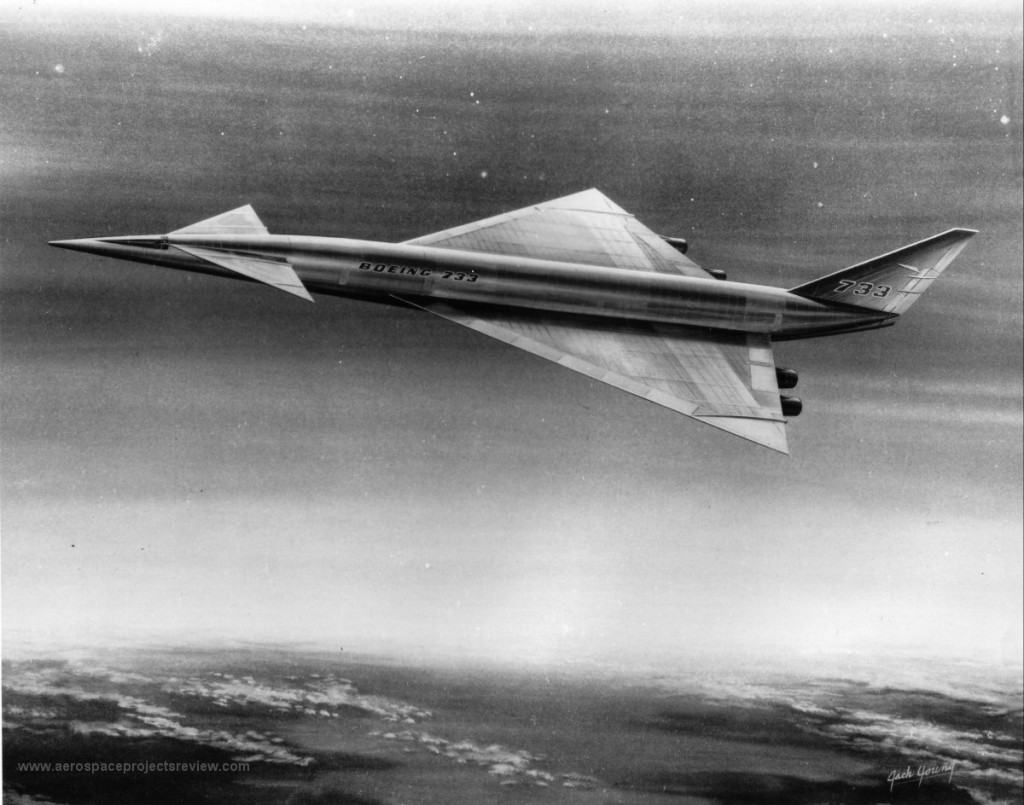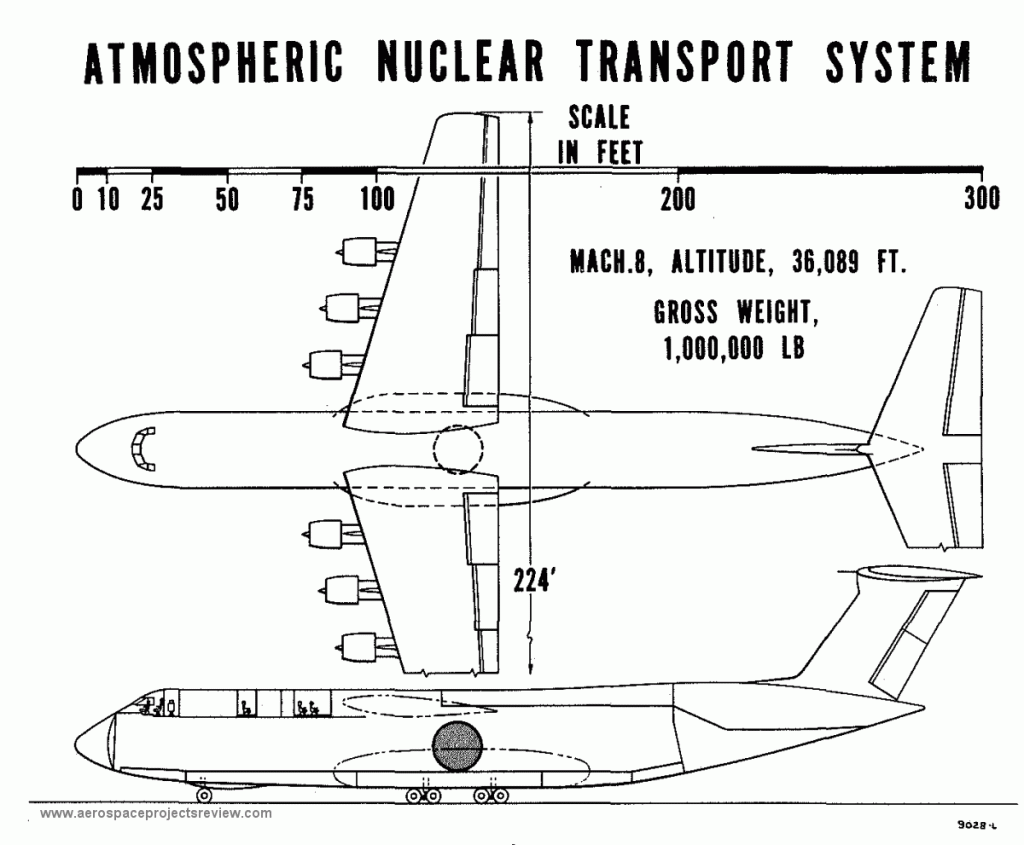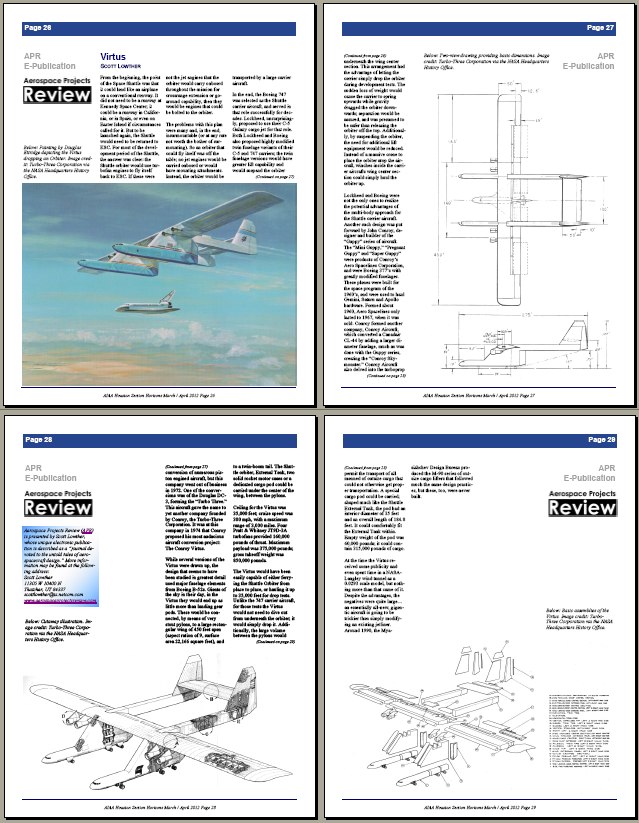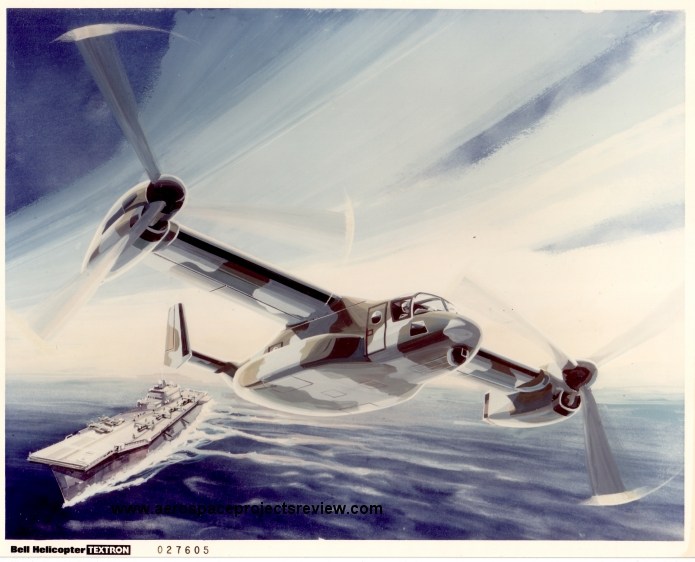In the mid 1960s, supersonic transports were just around the corner. And the trends in aviation development showed the aircraft designers and air travel planners that hypersonic transports were less than two decades away. Consequently, all the major aircraft designers in the US devoted effort to designing passenger transports that could carry paying customers at Mach 5 or greater. But a combination of politics (the OPEC oil embargo as well as a wider economic downturn, as well as largely trumped-up ecological concerns) and technological issues managed to assure that SSTs were never developed beyond the Concord stunt. And if a jetliner couldn’t get to Mach 1, it surely couldn’t get to Mach 5.
But in 1966, these issues were not yet seen, so Convair was busy designing a whole range of hypersonic transports. They might have missed out on the first generation of SSTs, but they were not going to miss out on the HSTs.
